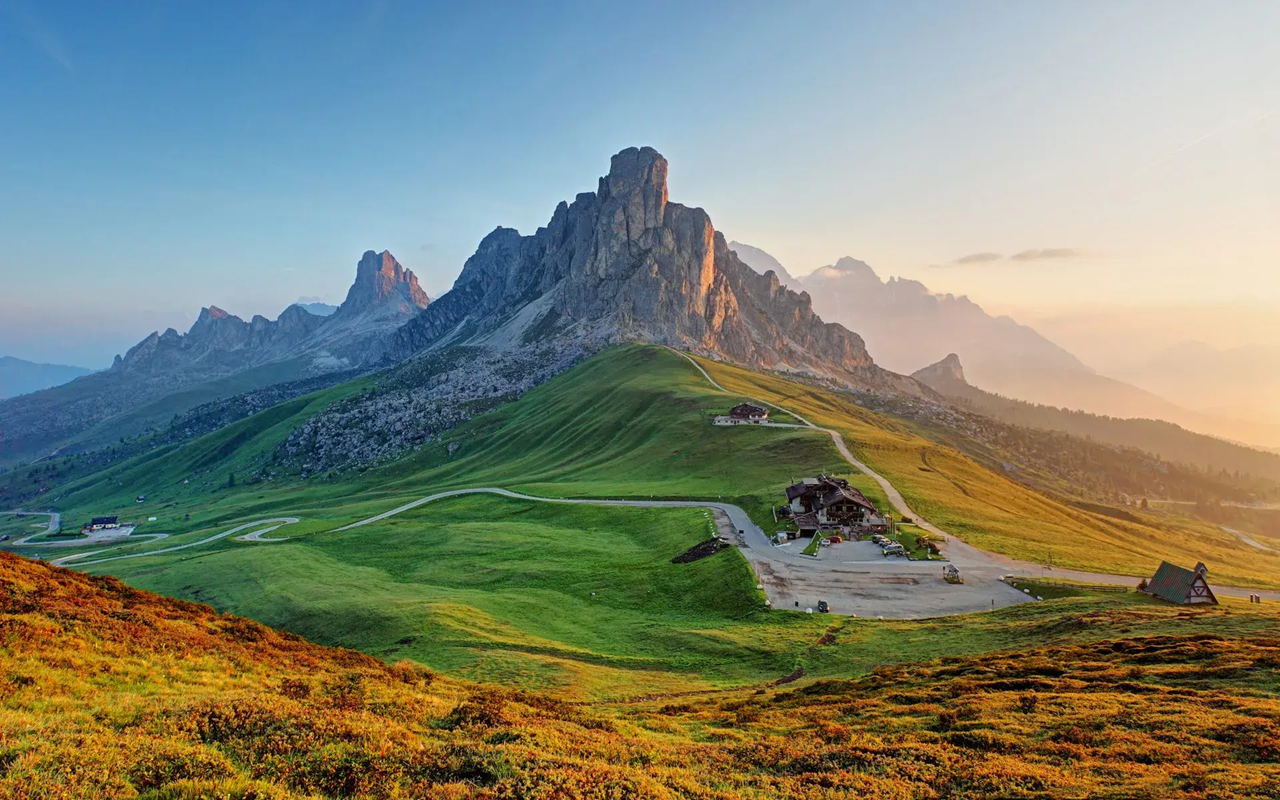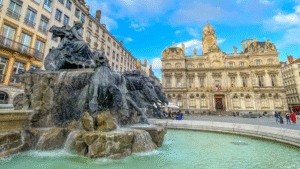The Dolomites, a stunning mountain range in northeastern Italy, offer some of the most breathtaking alpine scenery in the world. With jagged limestone peaks, lush valleys, and well-maintained mountain huts (known as rifugi), the Dolomites are the perfect destination for one of Europe’s most rewarding outdoor experiences: hut-to-hut trekking.
Unlike traditional backpacking where you carry everything, hut-to-hut trekking in the Dolomites allows you to hike light and sleep comfortably each night in a cozy mountain lodge. Whether you’re a seasoned trekker or a first-time hiker, this guide will help you prepare for an unforgettable journey through one of the most iconic mountain landscapes on the planet.
What is Hut-to-Hut Trekking in the Dolomites?
Hut-to-hut trekking involves hiking from one mountain lodge (rifugio) to another, staying overnight in the huts rather than camping or descending to towns. Each day, you trek through dramatic landscapes, then relax in a warm, welcoming hut with hearty Italian meals, local wine, and jaw-dropping views.
Why Choose the Dolomites for Hut-to-Hut Trekking?
- Spectacular scenery: Towering cliffs, turquoise lakes, and alpine meadows.
- Comfortable huts: No tents needed—just a bunk bed and a hot meal.
- Cultural experience: Blend of Italian, Austrian, and Ladin influences.
- Well-marked trails: The Dolomites offer one of the best-maintained trail systems in Europe.
Top Hut-to-Hut Trekking Routes in the Dolomites
1. Alta Via 1 (AV1) – The Classic Trek
- Duration: 8–12 days
- Distance: ~120 km (75 miles)
- Start/End: Lago di Braies to Belluno
Alta Via 1 is the most famous hut-to-hut trek in the Dolomites. It passes through iconic landscapes like the Tofane, Lagazuoi, and Civetta massifs. Ideal for intermediate hikers, AV1 offers a mix of rugged terrain, peaceful valleys, and spectacular rifugi.
2. Alta Via 2 – For the Experienced Trekker
- Duration: 12–14 days
- Difficulty: Advanced (via ferrata sections)
More challenging than AV1, Alta Via 2 traverses wilder, less-touristed sections of the Dolomites and requires a good level of fitness, experience, and sometimes technical gear.
3. Tre Cime di Lavaredo Loop
- Duration: 2–3 days
- Great For: Beginners or short trips
This loop around the iconic Three Peaks (Tre Cime di Lavaredo) is one of the most photogenic hikes in the Dolomites. It’s a great introduction to hut trekking for those short on time.
How to Plan Your Dolomites Hut-to-Hut Trek
1. Choose the Right Route
Consider your experience level, time available, and whether you’re comfortable with high alpine terrain or want a more relaxed hiking holiday.
2. Book Rifugi in Advance
Popular routes like AV1 can get booked months ahead—especially in July and August. Visit the CAI (Club Alpino Italiano) website or individual hut websites to reserve beds.
3. Pack Light (But Smart)
Since meals and bedding are provided, you can travel light. Essentials include:
- A daypack (30–40L)
- Sleeping bag liner (required in most huts)
- Layered clothing for changing weather
- Waterproof gear
- Headlamp, trekking poles, first aid kit
4. Bring Cash
Most huts do not accept credit cards, especially in remote areas. Bring enough Euros to cover your stays and food.
What to Expect at Mountain Huts (Rifugi)
Rifugi in the Dolomites are far from rustic shacks—they’re charming alpine lodges, many offering hot showers, beer on tap, and multi-course meals.
Accommodation
- Dormitory-style bunk rooms or private rooms (if booked early)
- Warm blankets (but bring your own liner)
Meals
- Dinner: Often includes pasta, soup, meat dishes, and dessert
- Breakfast: Light (bread, jam, coffee)
- Packed lunches: Available upon request
Vegetarian and special diets are usually accommodated if requested in advance.
Best Time to Go Hut-to-Hut Trekking in the Dolomites
The main trekking season runs from late June to mid-September.
| Month | Conditions |
| June | Snow may linger at higher elevations, but trails start opening |
| July-August | Peak season: warm, busy, fully open rifugi |
| September | Fewer crowds, cooler temps, fall colors—ideal for many hikers |
Avoid October–May as most huts are closed and snow can make trekking dangerous.
Is It Safe to Trek Alone in the Dolomites?
Yes—solo trekking is common in the Dolomites, thanks to excellent signage and hut infrastructure. That said:
- Share your route with someone
- Bring a detailed map or GPS
- Use apps like Komoot or Maps.me
- Know basic mountain safety and weather awareness
Tips for a Successful Trek
- Start early: Afternoon storms are common in the Alps.
- Stay flexible: Weather changes quickly. Be ready to reroute or rest.
- Learn basic Italian/German phrases: Many locals speak English, but it helps to know essentials.
- Travel insurance: Make sure it covers hiking above 2000m and emergency evacuation.
Cultural Highlights Along the Way
Hut-to-hut trekking in the Dolomites isn’t just about mountains—it’s also a chance to explore a rich mix of cultures.
- South Tyrol: A German-speaking region with Austrian roots
- Ladin Valleys: Unique language and traditions preserved in valleys like Val Gardena and Val di Fassa
- Local Cuisine: Try speck, canederli (dumplings), polenta, and apple strudel
Eco-Friendly Trekking
Support sustainability by:
- Using reusable water bottles
- Avoiding plastic packaging
- Staying on marked trails
- Respecting hut rules and local wildlife
The Dolomites are a UNESCO World Heritage Site—help keep them pristine for generations to come.
Final Thoughts
Trekking hut-to-hut in the Dolomites is more than a hiking trip—it’s a spiritual and cultural immersion into one of Europe’s most dramatic and beloved landscapes. With every ridge you cross and every rifugio you rest in, you’ll connect more deeply with the mountains, the people, and yourself.
Whether you hike for a weekend or two weeks, one thing is certain: the Dolomites will leave you breathless in more ways than one.
Quick Recap
| Item | Why It’s Essential |
| Lightweight pack | You’ll be hiking all day |
| Sleeping bag liner | Required in most huts |
| Euros in cash | Many huts are cash-only |
| Maps/GPS | Trails are well-marked, but always be prepared |
| Bookings | Reserve huts in advance during peak season |



